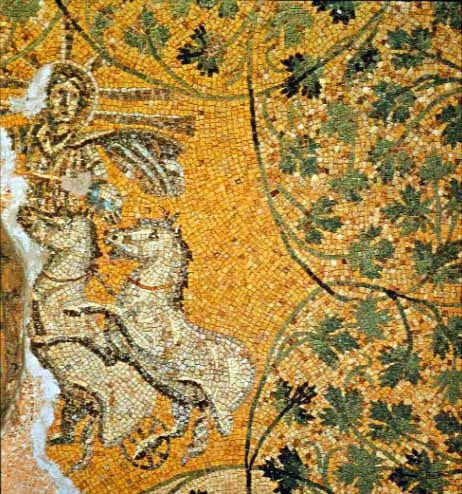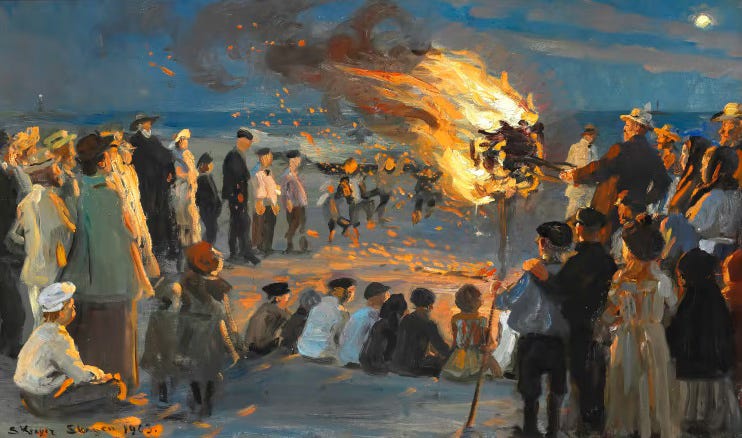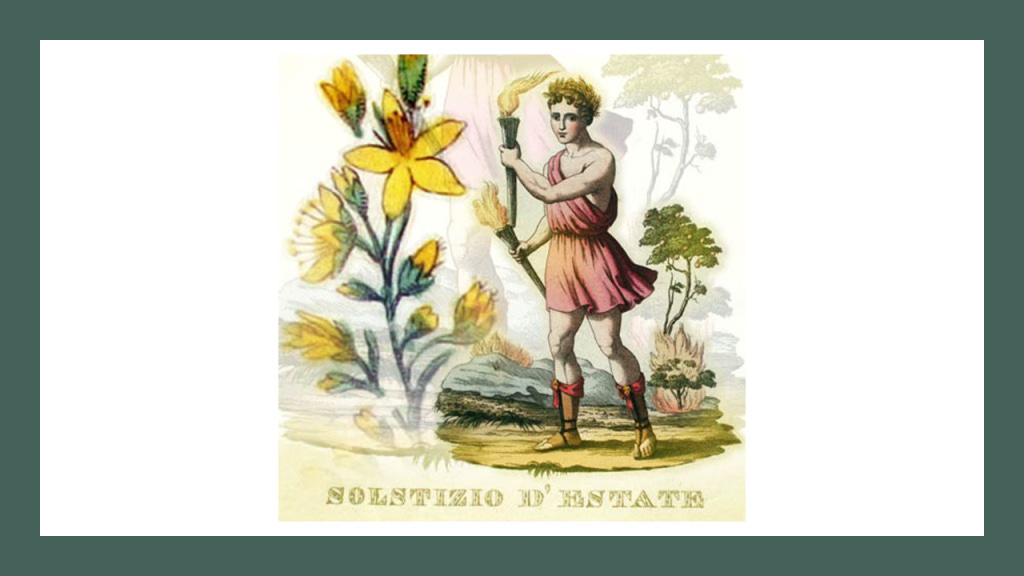16th century Engraving by Theodor de Bry - Flowers picked at the ‘crescentibus annis’
I’m away from home this week and I wasn’t going to post anything except to send you a virtual postcard as a little holding piece…
However….
I went to a fascinating talk last week by Amy Gulick (find her at the theflorentine.net) about St John the Baptist and the Italian Midsummer festivals and rituals associated with him.
The Feast of St John on the 24th June is the oldest saint’s day in the Christian calendar. One of the things that has long fascinated me is that conversion of pre-Christian celebrations and practices into Christian ones. They knew what they were doing those elders of the early Church. They understood that it’s one thing to persuade people to abandon their old gods but it's quite another to change the pattern of the agricultural year.
Personal aside here.
Before we moved to Wales when I was 14, I went to an all girls state grammar school in Yorkshire. It had a wonderful library - a long room lined with mahogany shelves, portraits of former headmistresses and with low windows overlooking the playing fields. At each end was a big Victorian fireplace and in the winter the fires were actually lit. It was glorious.
I think I must have been skiving off hockey because I have a distinct memory of being on my own in the library next to the fire, reading George Bernard Shaw’s play ‘Adroncles and the Lion’.
Shaw says in the preface to Adroncles:
“The conversion of a savage to Christianity is the conversion of Christianity to savagery.”
I think at that point, aged 13 and suddenly realising that so much of what we think of as Christianity was actually made up by people (probably all men), any vestige of conventional belief I had vanished up the library chimney. However the mental architecture of what I learned at Sunday School, has proved more durable than any belief in it.
Anyway, back to St John.
Amy started her talk by reminding us of the early imagery that identifies Jesus with the Sun God Apollo. This is a mosaic of Christos Helios from the ceiling of the Mausoleum of the Julii. It’s still there under St. Peter's Basilica and was made in the mid 3rd century.
The feasts of the birth of St John and the birth of Christ taken together, correspond to the Solstices and Equinoxes and thus spread the Christian influence over the whole year. The early fathers decided that Jesus was conceived around the spring equinox and born at the winter solstice - as the days lengthen during the Roman diebus crescentibus - the growing part of the year. St John was conceived at the autumn equinox and born at the summer solstice marking the arrival of shorter days - the diebus decrescentibus.
Which gives us “He was not the light but came to bear witness to the light,” (John 1:6)
"St. Hansblus på Skagens strand" by Peder Severin Krøyer c1906
The custom of lighting fires on St John Eve has been widespread throughout Christian culture and is just what GBS was talking about. It doesn’t take much imagination to guess why people would want to have a big bonfire on Midsummer Eve - long before it was deliberately linked to John the Baptist.
The Feast of St John is a big deal in the far south west. In the nineteenth century, tar barrels were lit and rolled down the streets of the holy headland on which Penzance is built. The celebration of St John’s Day at the Golowan festival is still the biggest festival down here and it’s fabulous. Sadly I’ll miss it this year.
Amy Gulick then went on to talk about the making of Acqua di San Giovanni - St John’s Water. Ten years ago when she first heard of it, it was a discreet ritual among older women in rural Italy and almost forgotten. Now it has been revitalised by a younger generation of women who post photos of their Acqua on Insta feeds and TikTok. That does not bother me at all. Actually I rather love it. What a great way to revive an old tradition.
So this is what I will be doing on the 23rd and 24th June.
To make Acqua de San Giovanni.
On the evening of 23rd June, collect some flowers and herbs. It is at midsummer when herbs and flowers are at their most potent. Place them in a bowl and pour over some cold water. Leave the bowl outside to let the dew of the night of St John mingle with the flowery water. Which flowers and herbs you use are up to you - in ancient times the combination mattered, it would have been personal and probably followed the doctrine of signatures. Today we are making a gesture.
On the morning of St john’s Day strain the liquid and discard the flowers. I’d like to think they are returned to the earth at this point.
Pat the water on your face and skin and sprinkle it around your home. Its protective powers only last a day, so be liberal. Even better, meet with your women friends over the festival and celebrate female friendship and midsummer all at the same time. Have fun.
Happy St John’s Day.
I’ll post some photos of my acqua in a note tomorrow.
Italian Herbal showing St John’s Wort in flower at the summer Solstice








I had no idea! What a fascinating discovery.
I love this. I’m going to make Aqua di San Giovanni. Thank you.